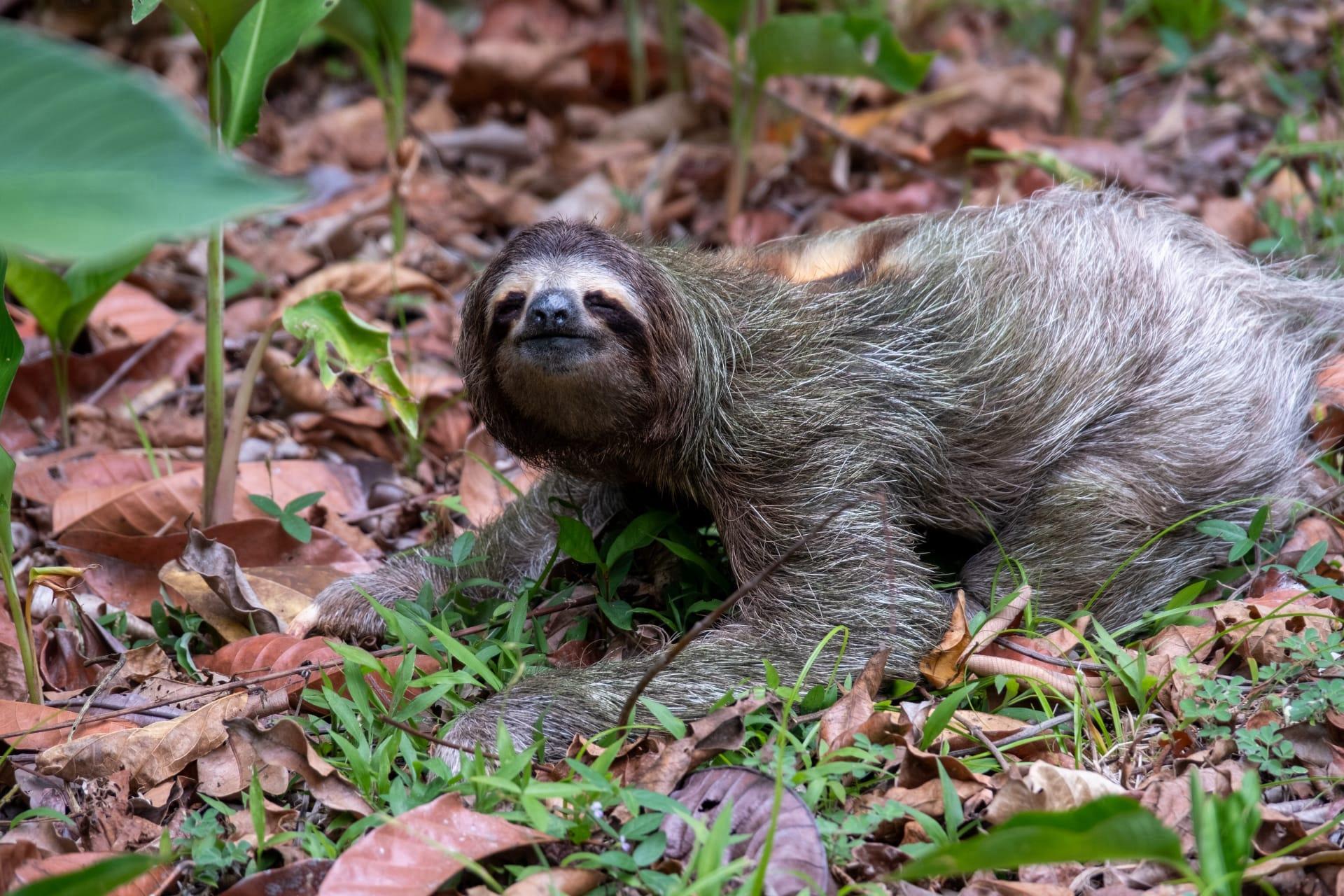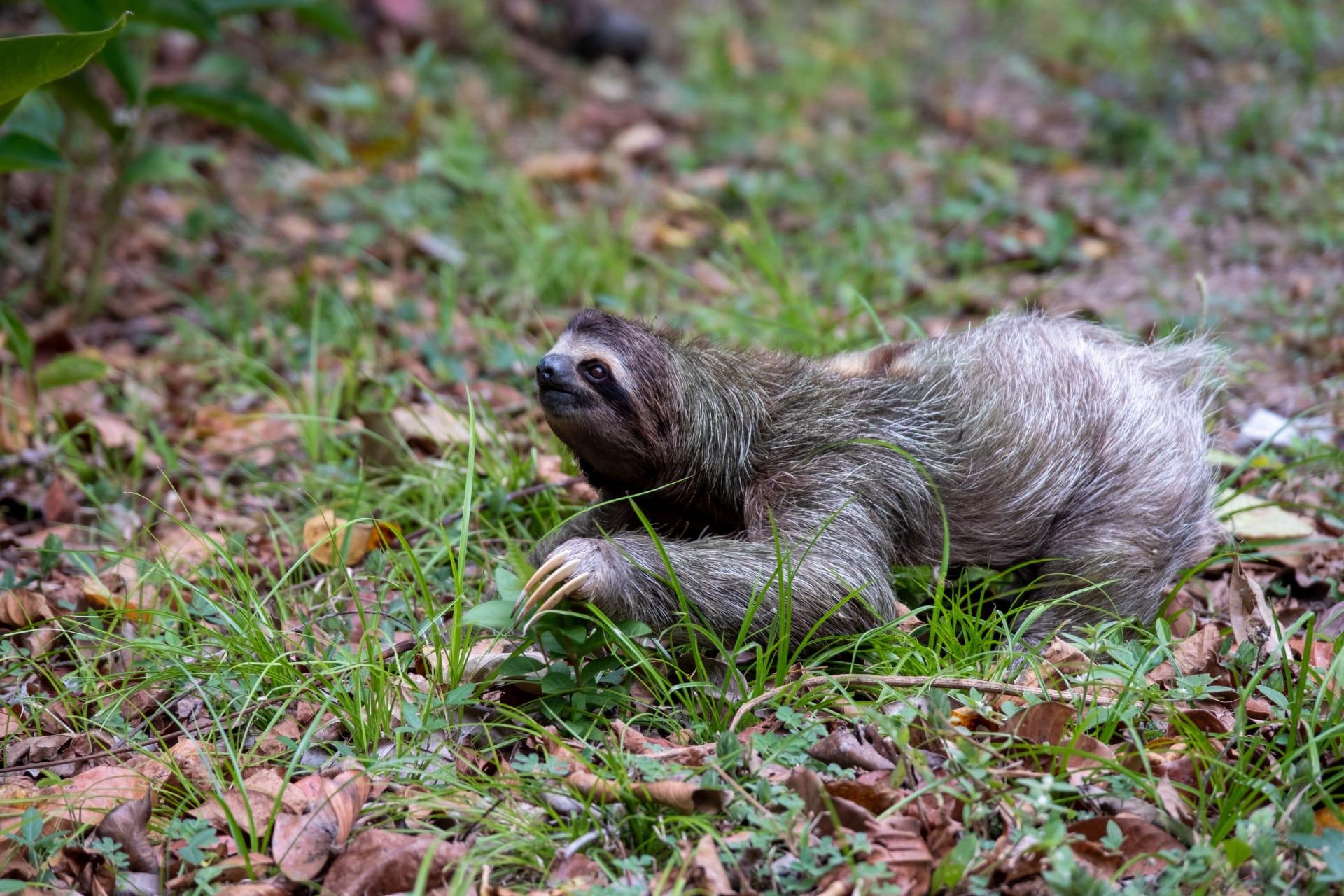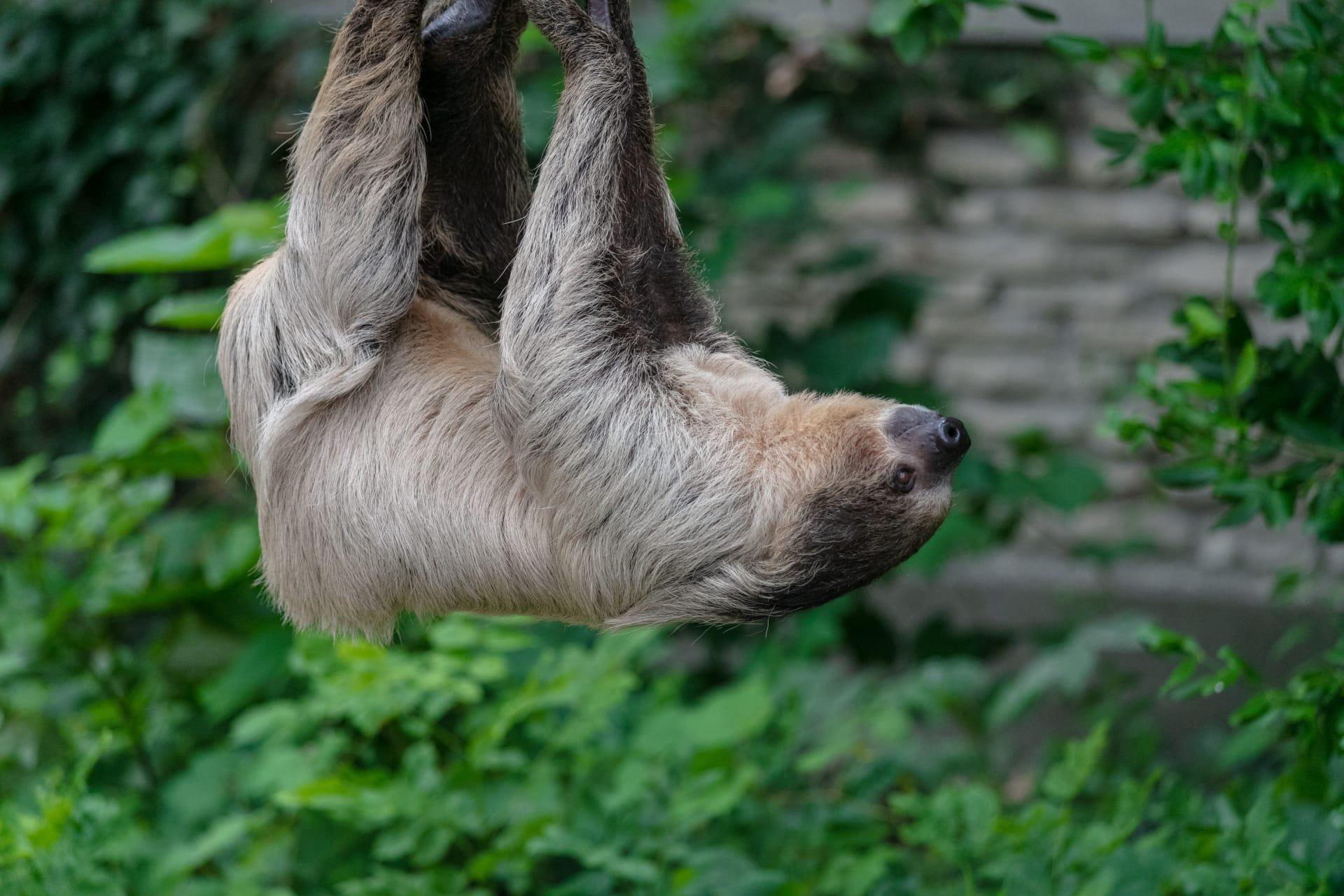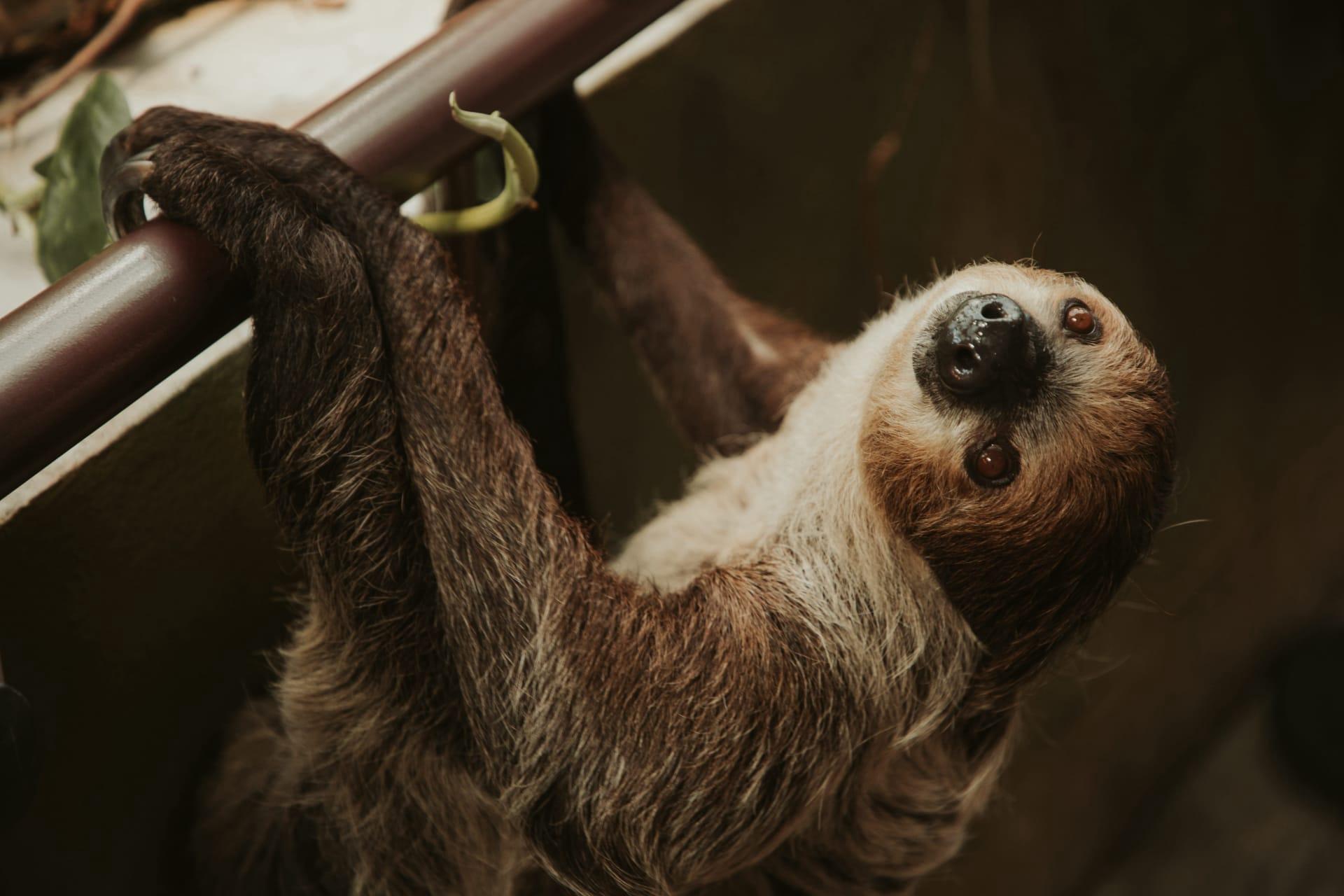1
Sloths are incredible swimmers. Unlike their slow movement on land, sloths can swim three times faster in water. They use a form of breaststroke to glide through the water, efficiently covering distances up to 21.7 meters (71 feet) per minute. This aquatic agility is vital for sloths living in rainforest habitats, where rivers and streams are common.
Another interesting fact about sloths is their unique fur ecosystem. Each strand of a sloth's fur can host a mini ecosystem of its own. The grooved hair structure of sloths provides a perfect habitat for algae, fungi, and even small insects. This green-tinged fur helps sloths blend into the treetops, providing a natural camouflage. In fact, the algae that grow on their fur can also provide essential nutrients when sloths lick their fur.

2
Sloths have an unusually low metabolic rate, which is about half of what would be expected for a mammal of their size. This slow metabolism means they need less food and can survive on a diet primarily of leaves, which are low in calories and nutrients. It also contributes to their famously slow movement, with sloths traveling on average only about 41 meters (134 feet) per day.
Their slow lifestyle has an unexpected benefit: longevity. Sloths in the wild can live for more than 20 years, a remarkably long lifespan for small mammals. This longevity is attributed to their low metabolic rate and a reduced risk of predation due to their camouflaged and motionless nature. In captivity, they can live even longer, with some sloths reaching 30 to 40 years of age.

3
Sloths have a highly specialized digestive system to handle their fibrous diet. Their stomachs have multiple compartments, similar to a cow's, where symbiotic bacteria break down the tough leaves. This digestion process is incredibly slow, taking up to a month to digest a single meal. This slow digestion aligns with their overall energy-conserving lifestyle.
Interestingly, sloths have a very precise weekly routine for bathroom breaks. Despite their tree-dwelling habits, they descend to the ground once a week to defecate and urinate. This regular descent is risky, exposing them to predators, but it's essential for maintaining their digestive health and possibly for communication purposes, as they often use the same spot.

4
Did you know that sloths are excellent climbers? Their long, curved claws are perfectly adapted for life in the treetops. These claws, measuring up to 10 centimeters (4 inches) in length, allow them to hang effortlessly from branches for hours, even while sleeping. This arboreal lifestyle is a key adaptation for their survival, keeping them away from ground predators.
Sloths are also known for their extremely slow reproduction rate. Female sloths typically give birth to only one baby per year, and in some species, the interval between births can be even longer. This slow reproduction rate is matched by a long gestation period; for example, the gestation period for a three-toed sloth is about six months. This low reproductive rate makes the sloth population particularly vulnerable to threats such as habitat destruction.

5
Another unique aspect of sloths is their temperature regulation. Unlike other mammals, sloths cannot regulate their body temperature effectively. Their body temperature fluctuates with the environment, ranging from 24 to 33 degrees Celsius (75 to 91 degrees Fahrenheit). This ectothermic nature means they rely heavily on the ambient temperature and sun exposure to stay warm.
Lastly, sloths are surprisingly good at holding their breath. They can hold their breath for up to 40 minutes by slowing their heart rate and conserving oxygen. This ability surpasses even that of many marine mammals and is another adaptation that aids their swimming prowess, allowing them to stay submerged and avoid predators when crossing water bodies.